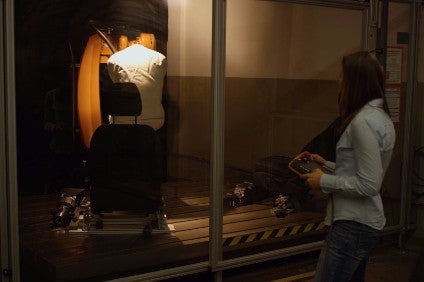
Ford of Europe said it had developed a robot to move like a human bottom and perfectly simulate how drivers and passengers get in and out of their car seats.
Engineers used pressure maps to establish a 'perch pattern' and resultant data enabled them to test the wear and tear of materials using the robotic bottom – dubbed Robutt – to mimic the most common paths.

Discover B2B Marketing That Performs
Combine business intelligence and editorial excellence to reach engaged professionals across 36 leading media platforms.
"From the first moment we get into a car, the seat creates an impression of comfort and quality," said Svenja Froehlich, a durability engineer in Cologne, Germany.
"Previously, we used pneumatic cylinders that simply moved up and down but we are now able to replicate very accurately how people really behave."
Based on an average sized large man, the Robutt was used to simulate 10 years of driving in just three weeks as part of testing for the redesigned Fiesta – sitting down and getting up 25,000 times.
The new test is now being rolled out for all of the automaker's vehicles in Europe.






